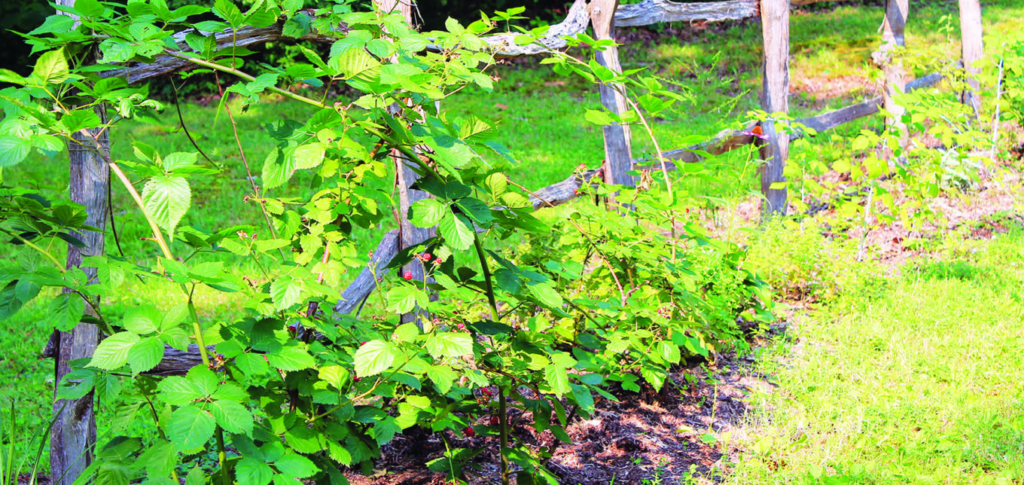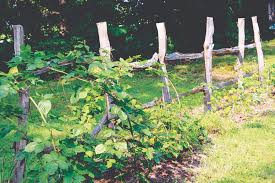By Benedict Vanheems, 13 October 2017
As the seasons shift from summer to winter, nature offers a rich bounty – from heavy fruit trees to hedges full of berries and nuts. It’s the perfect time to enjoy the fruits of the earth, and you can bring this harvest to your home by planting edible garden boundaries. Not only do they enhance your landscape, but they provide a wide range of delicious, homegrown produce.
What are Edible Garden Boundaries?
Edible garden boundaries are hedges or fences planted with fruit and nut-bearing plants. These living fences not only offer beauty and structure to your garden but also attract local wildlife and provide tasty ingredients for pies, wines, jams, jellies, chutneys, and more. Planting them in the fall is ideal for mild climates, but you can wait until spring if winters are harsh where you live.

Trained Fruit Trees: Maximizing Space and Flavor
Start with trained fruit trees that grow against fences or walls. Varieties like apples, pears, and peaches thrive when trained as fans, espaliers (parallel branches), or cordons (single-stemmed). These methods help you grow multiple varieties in smaller spaces, especially in areas with limited garden room. Walls that receive midday or afternoon sun are perfect for ripening fruits, while figs and other warmth-loving varieties benefit from the sun’s heat.
For even more versatility, you can train fruit trees on post-and-wire supports. These can act as both garden dividers and fruitful plants, providing tasty rewards for minimal effort.

Vining Fruits: Grow Grapes, Kiwi, and More
Grapevines are another fantastic option for covering garden boundaries. With sturdy support, these vines will quickly grow along walls or fences, offering a bountiful harvest of grapes. Try your hand at winemaking with your homegrown crop!
Kiwi vines, especially self-fertile varieties, are also ideal for small spaces. These rapid growers will soon cover your boundary and produce delicious, sweet fruits.
Berries Against the Wall: A Tidy Harvest
Many berry plants naturally grow into unruly shrubs, but with a little care, they can be trained to grow neatly against a wall. Varieties like redcurrants and blackberries can be trained into space-saving forms, and you can even find thornless varieties of gooseberries. Blackberries are also the parent of several hybrids, such as the loganberry, which can be a great addition to your edible boundary.

Hedgerow Fruits and Nuts: Mimic Nature’s Bounty
An edible hedge is an excellent way to mimic the seasonal abundance of nature. Many shrubs that bear autumn fruits make perfect hedgerow plants. Consider adding rowan (mountain ash) for its vitamin-rich berries, which can be used for jelly. Rambling roses offer rosehips, and elder shrubs are prized by home winemakers for their flowers and berries. Hazel provides nuts and flexible stems for garden supports, while crab apples are high in pectin and perfect for jam-making.
To deter animals or people, consider planting blackthorn, which produces sloes, the main ingredient in sloe gin. Hawthorn is another great choice, offering edible flowers and berries. These can be used to create fruit leather or add texture to salads.

Planting and Care Tips for Your Edible Boundaries
When creating your edible hedge, be sure to select plants that have similar growth habits and pruning needs. This ensures that one plant won’t overpower the others. Young plants will require water during their first year to help establish a healthy root system.
Conclusion: A Bountiful, Beautiful Garden Edge
An edible boundary doesn’t just define your garden – it enhances it with delicious fruits and nuts that you can harvest and enjoy all year long. From trained fruit trees to berry bushes and hedgerow plants, the options are endless. Experiment with different varieties, and let us know your favorite edible boundary plants in the comments below!
